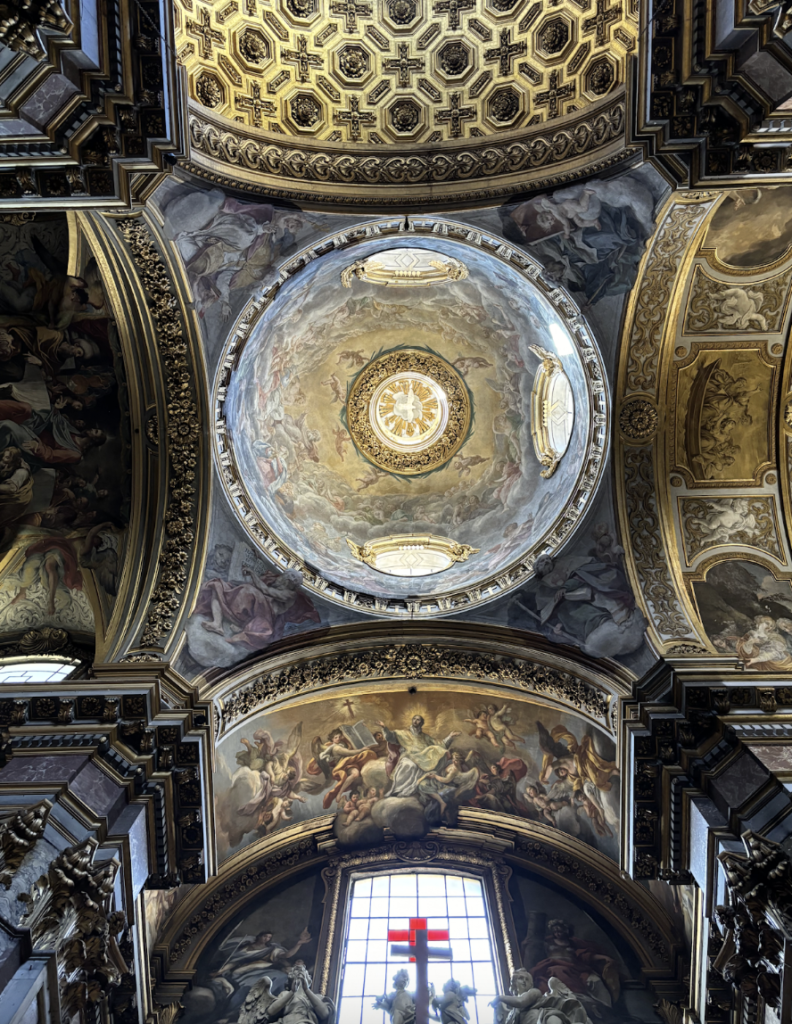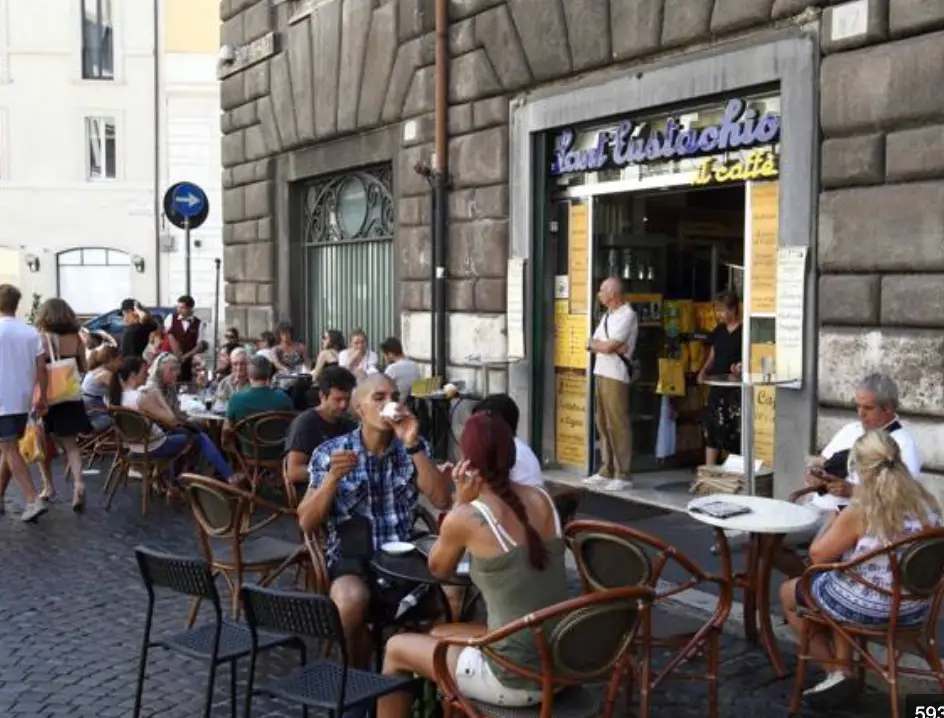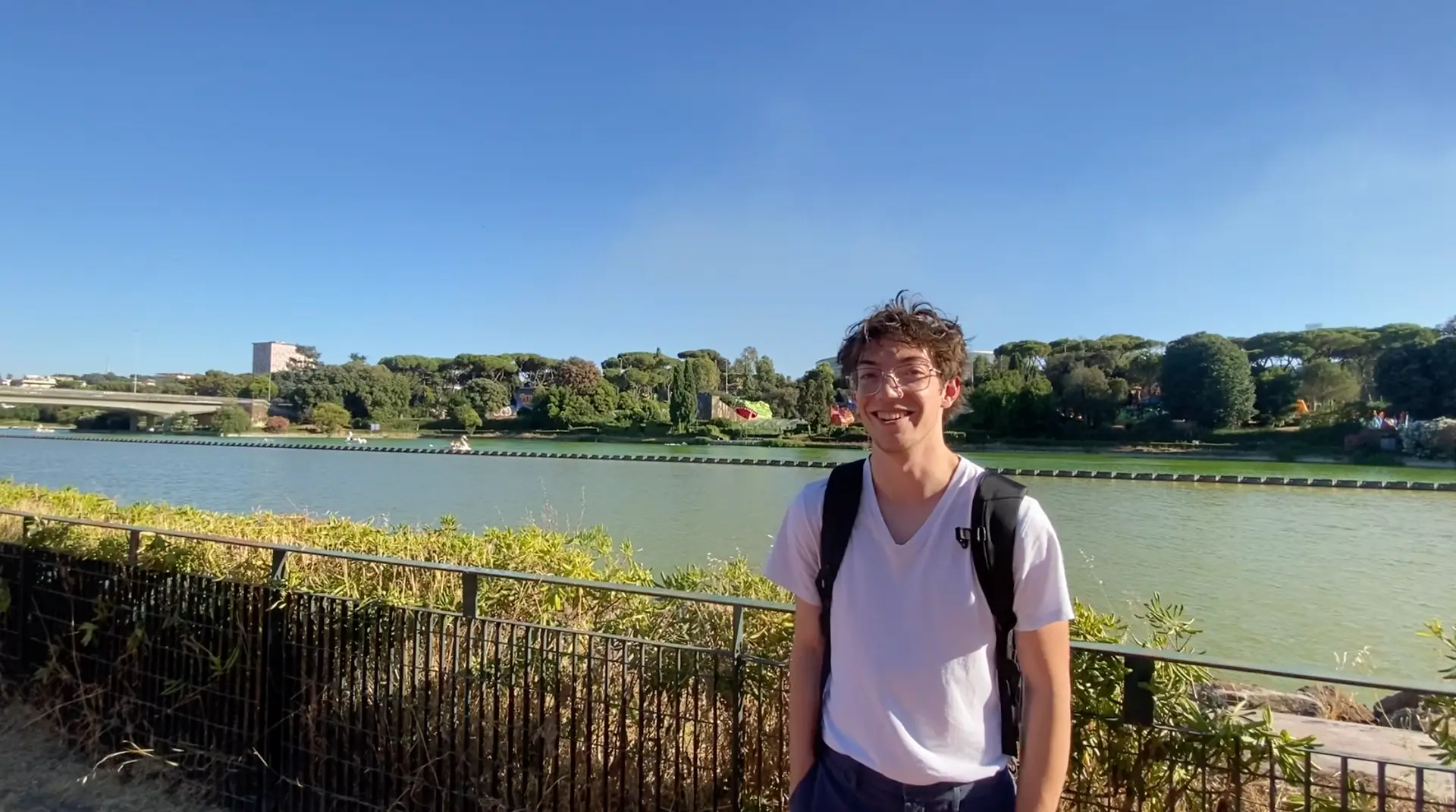Join us on a tour around the neighborhood and see what awaits you on your daily commute through the city when studying at Pantheon Institute. Check-out the video for an up close and personal look!
The Pantheon
Originally built as a temple to the gods of ancient Rome, the Pantheon was commissioned by Marcus Agrippa during the reign of Augustus between 25 and 27 BC. Converted to a Catholic church in the 7th century, and now formally titled as the Basilica di Santa Maria ad Martyres, the original Latin inscription carved on the temple’s facade continues to honour its founder, with the latin “M.AGRIPPA.L.F.COS.TERTIUM.FECIT.” translating to “Marcus Agrippa, son of Lucius, built this when he was consul for the third time”.
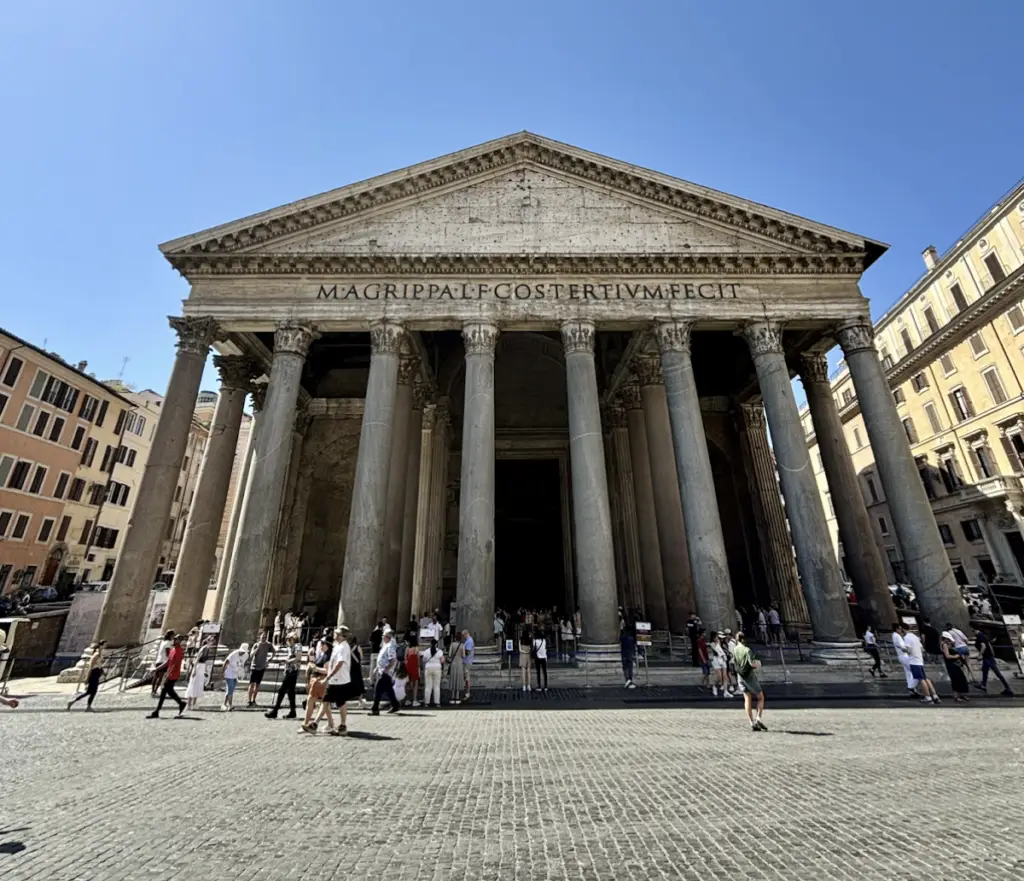
Today, the Pantheon still functions as a Catholic church and in fact is the oldest building, worldwide, still in working use. Outside of worshiping hours for practicing parishioners, entry tickets for tourists are €5 and can be purchased on the official Pantheon website.
The Pantheon is famous for its massive concrete dome that measures 43.2 meters across and features a huge oculus at the center. The internal ceiling of the dome is decorated with repeating patterns of square niches, knowns as coffers, that, in a feat of engineering genius, reduce the weight of the dome as it curves upwards. Rain or shine, the oculus serves as the only source of natural light and ventilation for the building. In a twist of ceremonial and architectural creativity, during the annual Pentecostal mass, the service is concluded with thousands of roses thrown down through the oculus by Roman firefighters, the red petals symbolizing the tongues of fire that illuminated over the apostles heads.

Santa Maria sopra Minerva
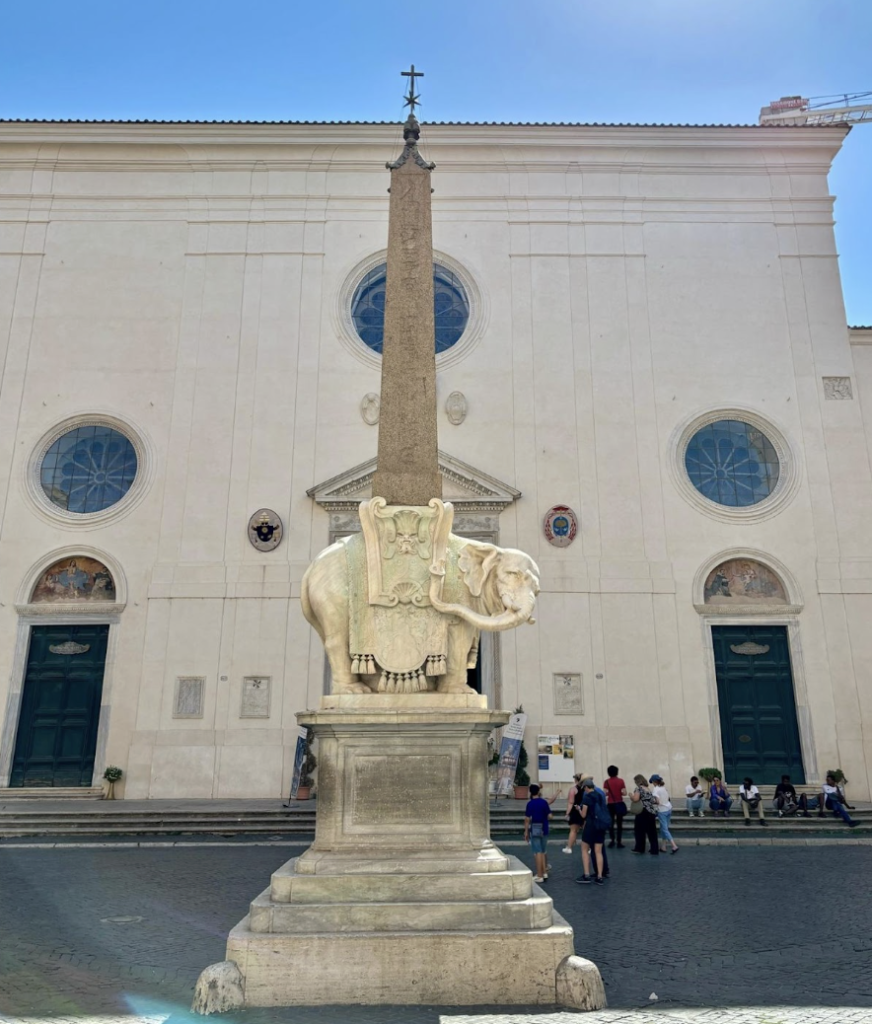
Originally built over the ancient ruins of a temple dedicated to an Egyptian god Isis (initially erroneously attributed to the Greek goddess Minerva) the Basilica of Saint Mary of Minerva is served by the Dominican order. Standing just one block East of the Pantheon, visitors are welcomed by the elephant and obelisk monument out front known as il Pulcino di Minerva. The elephant, commissioned by Pope Alexander VII and sculpted by Gian Lorenzo Bernini and his student Ercole Ferrata in 1667, is adorned by the smallest of Rome’s 11 Egyptian obelisks, this one in particular having been brought to Rome by Emperor Diocletian at the end of the 3rd century AD.
While the church sports a classic renaissance facade, internally the the basilica remains one of Rome’s only examples of Gothic architecture. With lofty vaulted archways and dramatic blue and gold ceilings, the church holds several important works of art, including Michelangelo’s Cristo della Minerva and a series of frescos by Filippino Lippi adorning the Carafa Chapel. You can take a 360-degree tour on the Basilica’s official website.
Just to the left of the Basilica’s entrance are the gates to the Chiostro della Basilica di Minerva, a gorgeous cloister not well known to most tourists. Built by the Dominican friars who took over the Basilica and settled there in the 13th century, the garden within provides a beautiful and peaceful location that hosts a variety of modern art exhibitions throughout the year. Free entry is allowed during visiting hours.
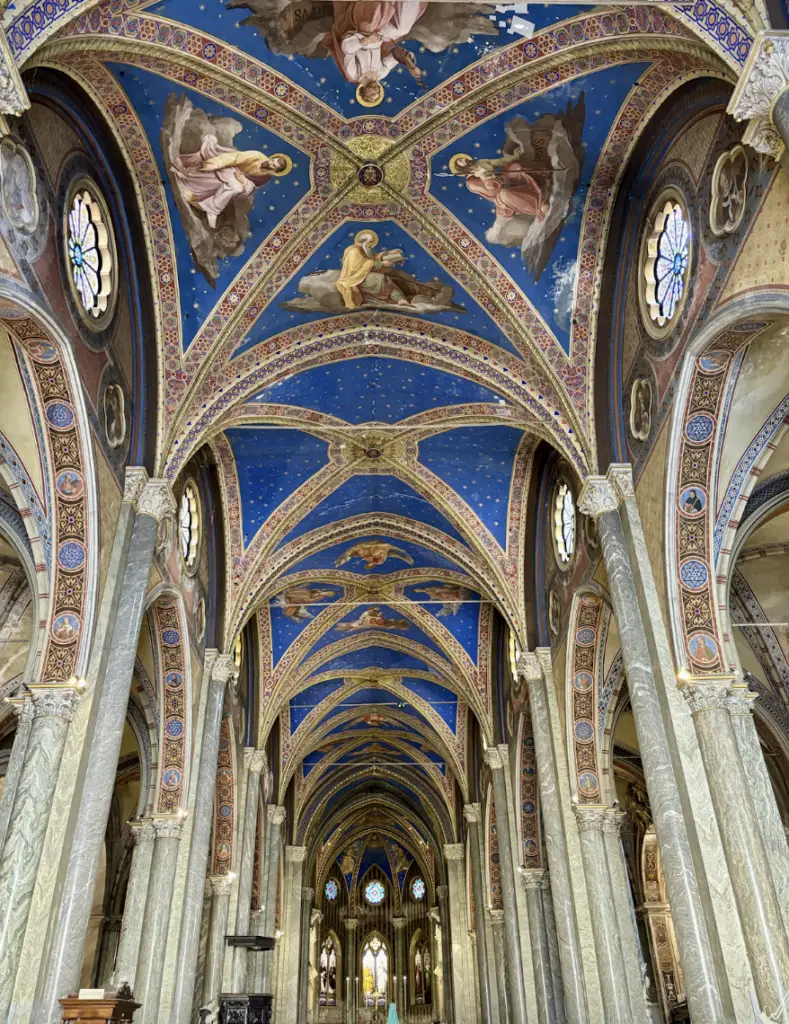
The Trevi Fountain

Needing no introduction, just a few blocks west of the Pantheon is the Trevi Fountain. Launched into the cultural zeitgeist and made world famous by Federico Fellini’s 1960 film La Dolce Vita, the fountain stands 26 metres high and 49 metres wide. The monument was originally designed by Nicola Salvi, with construction starting in 1762, and then completed by Giuseppe Pannini over 30 years later. At its centre is a statue of the Greek god Oceanus, riding a chariot pulled by sea horses and flanked by tritons, to his left and right the statues of Abundance and Health. The Trevi’s water comes from the ancient Acqua Vergine aqueduct, originally constructed in 19 BC. The originating spring feeding the Trevi is considered to be one of Rome’s freshest and best tasting sources of potable drinking water. Legend has it that throwing one, two, or three coins in the fountain will gain you a return trip to Rome, love, and even marriage.
Largo Argentina
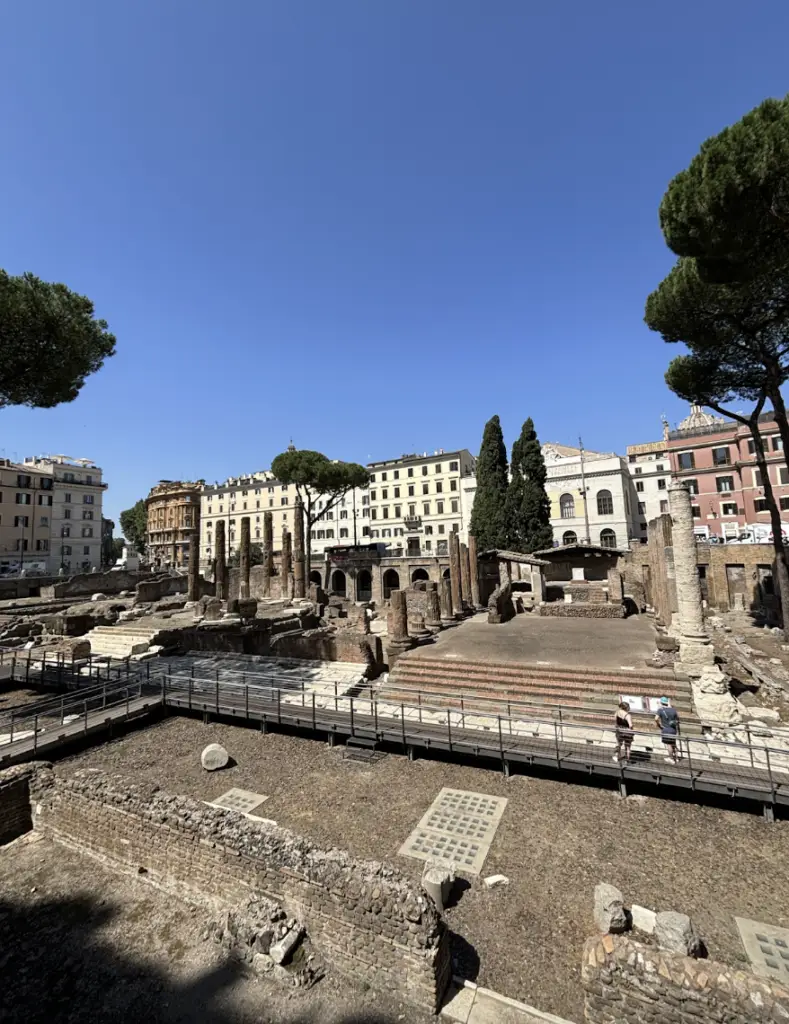

Just a few blocks north of the Pantheon lies Largo di Torre Argentina. This piazza is renowned for its archaeological treasures. Within the ancient ruins of the Roman Republican temples is the Theatre of Pompei, the location where Julius Caesar was infamously assassinated in 44 BC. In between the crumbling remains you may find some unexpected furry residents: the cats belonging to one of Rome’s many protected cat colonies. During excavations of the archaeological site in 1929, cats began to make their home among the ruins. This led to the creation of an official sanctuary for stray and abandoned cats, cared for by a succession of gattare (‘cat ladies’) until the establishment of the Torre Argentina Cat Sanctuary in October 1994. Visitors can visit the cat colony and even adopt kittens that have not been permanently moved to the colony. In Rome, all cat are protected by the state, making it illegal to kill or remove a feral cat from their urban home.
Campo dei Fiori
Just a few blocks away from Largo Argentina is Campo dei Fiori, one of the oldest open-air markets in Rome and still one of the best place to find unique Roman specialties. Since 1869, every morning (except Sundays), the piazza is filled with dozens of vendors in their colorful stalls selling fruit, vegetables, meat, poultry, fresh fish, flowers and plants, clothes, and other household items. Today you can find some of the freshest local produce around Lazio. There are also clothes, bags, souvenirs, jewelery, and other artisanal wears on offer.
The piazza is lined with all kinds of bars, restaurants, bakeries, and even a historic movie theater, the Cinema Farnese, famous for screening a wide variety of independent and foreign films as well as hosting film festivals. Showtimes and schedules can be found on their website.
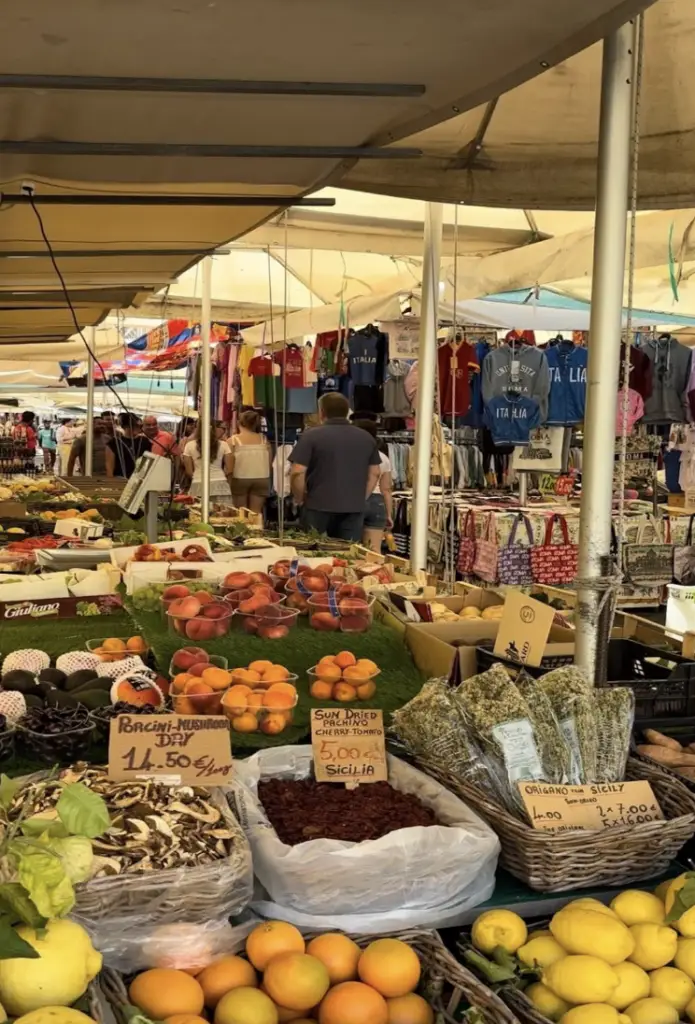
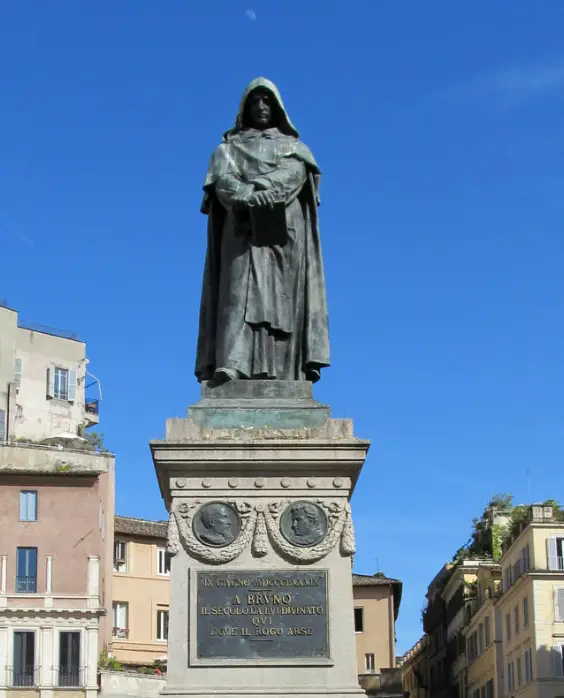
In ancient Rome, Campo dei Firori was originally a storage for chariots (thanks to the nearby Circus Maximus race track). During the Renaissance, it became a bustling nexus of tradesman and a central location for announcements. Campo dei Fiori also served as a space for public adjudication where executions often took place. To that end, in the center of the square looms the 16th century philosopher Giordano Bruno who was accused of heresy by the Church for his revolutionary theories about the universe and was subsequently sentenced to be burned alive right there in the piazza. The legend goes that students mustn’t look Bruno in the eyes or they risk never graduating!
Sant Eustachio
Located a block west of the Pantheon is the Basillica Sant Eustachio, dating back to early 700 AD, and named for the martyr Saint Eustace. Adorning the facade’s pediment is a deer head. The legend goes that Saint Eustace, originally a Roman general, was converted to Catholicism
when, while hunting, he saw a cross appear between the antlers of the stag he was hunting.
The interior of the Basilica was constructed in the Baroque style under the supervision of architects Cesare Corvara and Antonio Canevari.
Today, one of Rome’s most famous cafe’s looks out onto the church. Cafe Sant Eustachio serves ice cream, chocolate treats, and what some call the Best Coffee in Rome. In the summer, you can get a cafe mousse al cafe, a creamy frozen coffee topped with whipped cream, or a shakerato, an Italian iced coffee shaken to perfection!
